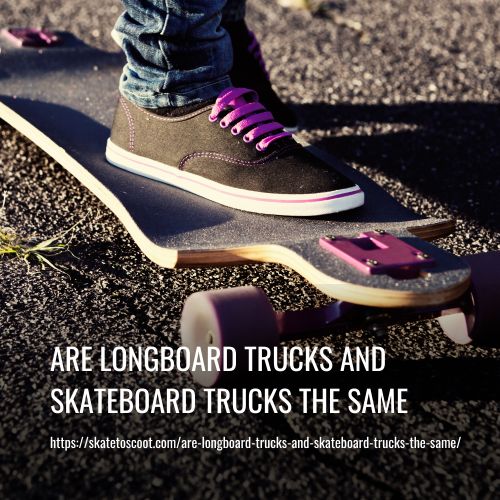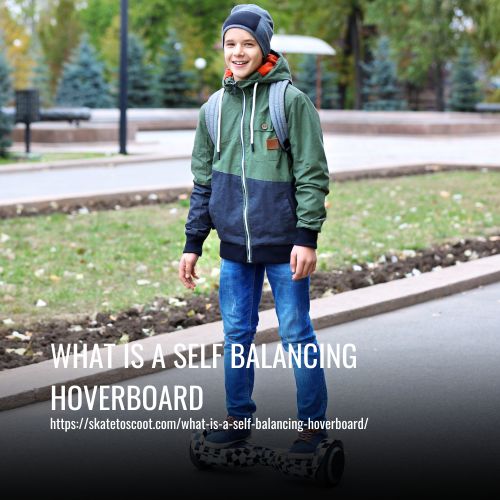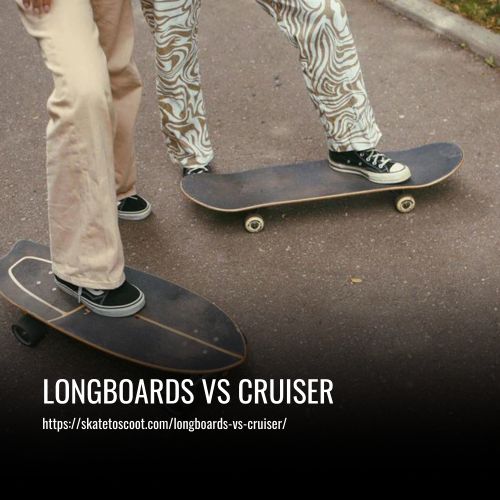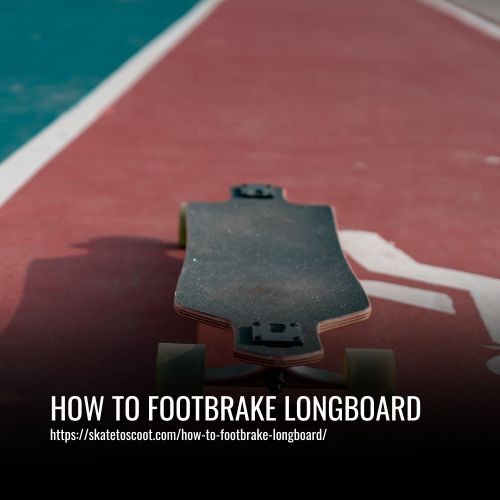As an Amazon Associate we earn from qualifying purchases.
No, longboard trucks and skateboard trucks are not the same. They have different designs and sizes to accommodate the specific needs of each type of board. Longboard trucks are typically wider and have a larger turning radius, while skateboard trucks are narrower and offer more maneuverability.

Longboard Trucks VS Skateboard Trucks
Longboard trucks are generally larger and wider than skateboard trucks. The hanger width of longboard trucks typically ranges from 150mm to 180mm, depending on the size of the deck. This wider hanger provides more stability and a wider turning radius, making it ideal for cruising and downhill riding. Longboard cruisers usually use trucks in the range of 150mm to 160mm, while larger decks, around 9 inches, may require a 180mm hanger for a more reliable ride.
On the other hand, standard skateboard trucks have a hanger width of 100mm to 145mm. These narrower trucks are designed for flip tricks and a more responsive riding experience. For a 7.5-inch skateboard deck, a 128mm hanger is commonly used, allowing for freestyle tricks and a centered feel with increased mobility.
Apart from size, there are other differences in the design and features of longboard and skateboard trucks. Longboard trucks often have reverse kingpin setups, which means the kingpin (the bolt that holds the trucks together) is positioned on the opposite side than in traditional kingpin (TKP) trucks used for skateboarding. Reverse kingpin trucks provide a more stable and smoother ride, especially at higher speeds.
Hanger width
Hanger width is an important factor to consider when comparing longboard trucks and skateboard trucks. The hanger refers to the T-shaped metal part of the truck that holds the axle and wheels.
In general, longboard trucks tend to have wider hangers compared to skateboard trucks. This is because longboard trucks are designed to match the width of the longboard deck, providing a stable and durable ride. The wider hanger allows for better stability and control, making them ideal for cruising and fast downhill riding.
On the other hand, skateboard trucks typically have narrower hangers. This narrower width enables maximum maneuverability and excellent control, which is crucial for performing freestyle tricks and flip tricks. However, this narrower hanger compromises stability and may not grip the surface as effectively.
Choosing the right hanger width depends on your riding style. If you prioritize stability and a smooth ride, longboard trucks with wider hangers are recommended. For those who prefer performing tricks and want more maneuverability, skateboard trucks with narrower hangers are a better choice.
It’s worth noting that the hanger width should match the width of the deck. For example, a 7.5-inch deck would require a skateboard truck with a hanger width close to 7.5 inches, while a 9-inch deck would require a hanger width close to 9 inches.
Axle width
When choosing between longboard trucks and skateboard trucks, axle width is an important factor to consider. The axle width refers to the width of the truck, which should ideally match the width of the deck. Longboard trucks usually follow this recommendation and provide the same width as the deck. This results in a stable and durable ride, perfect for cruising and fast downhill riding.
On the other hand, skateboard trucks commonly use an axle width narrower than the board. This narrower axle width provides maximum maneuverability and excellent control, making it great for performing freestyle tricks. However, this narrower axle also means that skateboard trucks are less stable and may not grip the surface as effectively as longboard trucks.
Bushings
Bushings play a crucial role in the performance and stability of both longboard and skateboard trucks. These rubber cushions directly affect the handling of your ride and can be customized according to your preferences.
Longboard trucks typically come with a range of bushing options to cater to different riding styles. For downhill riding, stiffer bushings are preferred as they provide better stability at high speeds. Soft bushings are ideal for carving, allowing for smooth and fluid turns. Medium bushings are commonly used for cruising as they offer a balance between stability and maneuverability.
On the other hand, skateboard trucks often come with tighter and stiffer bushings to enhance stability during tricks and maneuvers. This tighter fit helps prevent swerving while performing flip tricks or other freestyle moves. However, it’s important to note that this may sacrifice some of the turning ability and responsiveness compared to longboard trucks.
Baseplate
The baseplate serves as a crucial connector between the deck and the truck in both longboard and skateboard trucks. Its angles and the housing of the pivot cup play a significant role in controlling the board’s performance.
Longboard trucks typically feature a higher angle for their baseplates, ranging from 48 to 50 degrees. This higher angle provides the best carving power, making it ideal for cruising and downhill riding. Additionally, the higher angle helps beginners find stability and control on their boards.
On the other hand, skateboard trucks usually have baseplate angles that range from 40 to 45 degrees. The lower angle allows for more grip and stability at higher speeds, making them well-suited for tricks and maneuvers.
Kingpin
One notable difference between longboard trucks and skateboard trucks is the type of kingpin they use. Longboard trucks typically use a reverse kingpin (RKP) design, while skateboard trucks use a traditional kingpin (TKP).
The reverse kingpin on longboard trucks is positioned slightly higher and faces outwards. This design is preferred for carving, cruising, and freestyle riding as it provides more stability and control. The higher placement of the kingpin also helps beginners find their balance on longboards.
In contrast, skateboard trucks utilize the traditional kingpin, which is located on the same side as the axle and positioned lower. This configuration is favored for various skatepark maneuvers, tech sliding, and precise carving. The traditional kingpin offers excellent control and maneuverability for the more technical aspects of skateboarding.
Material
Trucks, whether for longboards or skateboards, are made using various materials that impact the overall ride quality. Longboard trucks typically utilize a combination of metals like steel and brass mixed with aluminum. This construction provides a stronger grip and enhances the strength and durability of the trucks.
In addition, longboard trucks often feature hollow kingpins and axles. These hollow components help reduce the overall weight of the trucks, resulting in lighter trucks that are beneficial for all types of skating. The use of lighter materials allows riders to have more control and maneuverability, making it easier to perform tricks and maneuvers.
On the other hand, skateboard trucks typically consist of an aluminum baseplate and hanger, with steel axles. This combination of materials is designed to provide a balance between strength and performance. The aluminum components contribute to the trucks’ lightness, allowing skaters to execute flip tricks and perform with skill and precision. Meanwhile, the steel axles offer durability and stability during various skateboarding maneuvers.
Longboard vs Skateboard Trucks – The Winner
Longboard trucks typically have a reverse kingpin design and are wider, which makes them ideal for wider longboard decks. These trucks provide a balanced ride and are well-suited for carving, cruising, and downhill riding. They are also great for beginners as they offer stability and control.
On the other hand, skateboard trucks usually have a traditional kingpin and are narrower. These trucks are commonly used for shorter and narrower skateboard decks and are favored by street skaters, bowl riders, and those who frequent skate parks. Skateboard trucks require more skill and balance to make sharp turns and execute tricks effectively.
The choice between longboard and skateboard trucks ultimately depends on your skating style and preferences. If you enjoy cruising, carving, or downhill riding, longboard trucks may be the better option. On the other hand, if you prefer street skating or skate park gameplay, skateboard trucks are the way to go. Remember to consider factors such as the width of your board and the type of riding you plan to do before choosing the right truck for your setup.
Comparison Table: Longboard Trucks vs Skateboard Trucks
When it comes to choosing the right trucks for your board, understanding the differences between longboard trucks and skateboard trucks is crucial. To help you make an informed decision, here’s a comparison table highlighting key variations:
| Criteria | Longboard Trucks | Skateboard Trucks |
|---|---|---|
| Hanger width | 150 to 180 millimeters | 100 to 145 millimeters |
| Axle width | Same as the deck | Narrower than the deck |
| Kingpin | Reverse kingpin | Traditional kingpin |
| Bushings | Neither too hard nor too soft | Firm and tight |
| Baseplate | 48 to 50° | 40 to 45° |
| Material | Hard metals | Softer metals |
By understanding these differences, you can easily choose the appropriate trucks for your riding style and board preference. Whether it’s the wide and stable ride of longboard trucks or the nimble and precise control of skateboard trucks, finding the right fit is essential for an enjoyable riding experience.
Skateboard trucks Vs Longboard trucks: What Should You Choose?
When it comes to choosing between skateboard trucks and longboard trucks, it really depends on your riding style and the type of board you have. Both trucks have their own unique characteristics that cater to different needs.
Longboard trucks are typically wider due to the reverse kingpin design. This makes them ideal for larger boards and provides a more comfortable and stable ride. Longboard trucks are perfect for carving, cruising, and downhill riding. They also tend to be more forgiving for beginners.
On the other hand, skateboard trucks have the traditional kingpin and are often thinner. This makes them better suited for narrower and shorter boards. Skateboard trucks are commonly used for skateboarding in skateparks and street bowls. They require a higher level of skill and stability, especially when making sharp turns or performing flip tricks.
Ultimately, the choice between skateboard trucks and longboard trucks depends on your personal preference and riding style. If you enjoy cruising and carving on larger boards, longboard trucks are the way to go. If you prefer skatepark or street-style skateboarding on narrower and shorter boards, skateboard trucks are more suitable. Consider factors such as board size, riding experience, and the type of tricks you want to perform when making your decision.
FAQs
Longboards and skateboards are both popular forms of transportation and recreational activities. They both feature a similar construction with a deck, trucks, and wheels. However, there are some key differences between the trucks used on longboards and skateboards.
Longboards typically utilize reverse kingpin (RKP) trucks, which are positioned with the kingpin facing toward the center of the deck. This positioning is different from traditional skateboard trucks, which have the kingpin facing outward. The backward position of RKP trucks on longboards offers several advantages.
It provides a more stable ride, making it easier to maintain balance and control, particularly when cruising at higher speeds. Additionally, this setup helps to reduce speed wobbles, allowing riders to maintain stability and confidence while riding downhill.
No, not all longboard trucks fit all decks. The compatibility between trucks and decks depends on the sizing concept. Skateboards typically require narrower trucks, while longboards need trucks with axle pin lengths that match the width of the deck. It is essential to choose trucks that properly fit the deck to ensure optimal performance and handling.
Interchanging longboard trucks with skateboard trucks will not produce favorable results due to the size differences. While it may be possible to use secondhand longboard trucks on a skateboard, this configuration may pose safety risks and restrict movement due to the size of the axles. It is recommended to stick to the appropriate trucks for each type of board to ensure safe and enjoyable riding experiences.
No, not all longboard trucks are compatible with all longboard decks. Similar to the skateboard sizing concept, longboards require trucks with axle pins that match the width of the deck. This ensures proper alignment and optimal performance.
Skateboards, on the other hand, should ideally have narrower trucks. It is important to choose trucks that are specifically designed for the intended deck to achieve the best results.
Installing longboard trucks on a skateboard deck is not recommended. Skateboard decks are narrower than longboard decks, so the trucks may not fit properly. This can cause issues like wheel bite, making turning difficult and increasing the risk of accidents. Additionally, using longboard trucks on a skateboard deck can affect the overall riding experience. Skateboards are made for tricks and street-style riding, while longboards are better for cruising and downhill.
Conclusion:
While longboard trucks and skateboard trucks may share some similarities, they are not the same. It’s important to understand the differences between the two, as they can greatly impact your riding experience.
Whether you’re a longboard enthusiast or a skateboarder, knowing the right type of truck for your chosen sport is crucial. So, next time you hit the streets or the skate park, make sure you’re equipped with the right trucks for the ride of your life!
Amazon and the Amazon logo are trademarks of Amazon.com, Inc, or its affiliates.



